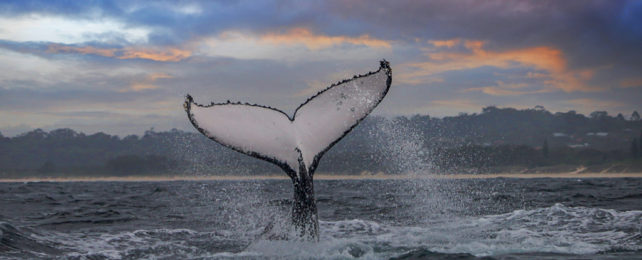Humans have concocted all sorts of equipment to help us overcome the intense water pressures of the ocean's depths.
Yet our fellow mammalians, the cetaceans (dolphins, whales, and porpoises), can somehow go far deeper while completely naked – and stay down for hours without taking a breath.
And these animals are working against more than just external pressure – fluking, the powerful up-and-down movement of a whale's tail, can create internal pressure that builds up on their cardiovascular system. For land-dwelling animals, we'd simply exhale that pressure out. But cetaceans don't have that luxury.
When cetaceans dive holding their breath, each tail kick sends waves of increased pressure coursing through their abdomen and thorax, and into the bloodstream.
If these pressure pulses reached their brains it would pulverize the delicate capillaries that perfuse it. So where does all that extra pressure go?
A new study may have found the answer: a mysterious, massive network of blood vessels collectively called the retia mirabilia may act as a a literal safety net to buffer this pressure.
University of British Columbia zoologist Margo Lillie and colleagues figured this out by examining the anatomy of a type of baleen whale, the fin whale (Balaenoptera physalus) and past information from bottlenose dolphins (Tursiops truncatus).
After untangling the finer points of their anatomy, the researchers then generated a computer model of fluid and pressure dynamics in moving cetaceans based on the morphology of 11 species.
While most mammals have fairly direct blood flow to the brain, cetaceans' blood goes through the retia mirabilia, which is Latin for "wonderful net", a network of blood vessels (both veins and arteries).
While this structure has been studied for decades, its function has remained largely mysterious.
With their modeling the team found the retia mirabilia has the potential to protect cetaceans' brains from a whopping 97 percent of pressure pulses.
This cluster of vessels lies between the aorta that pumps blood away from the heart and the network of vessels supplying blood to the brain.
When one of these pressurized pulses of blood is passed through these layered nets of vessels, they capture and split the pressure across their large surface area, diffusing it with the help of cerebrospinal fluid.
So by the time the blood reaches the brain side of the vascular system it packs far less of a punch.
And they may not be the only mammals to do so.
"The role of cranial retia as blood pressure regulators is not without precedence," Terrie Williams, an evolutionary biologist from University of California Santa Cruz, notes in a commentary accompanying the new paper.
Giraffes "may rely in part on cranial retia to avoid marked cerebral pressure changes and the possibility of 'fainting' as the animals stoop and then lift their heads when drinking."
Cetaceans returned to the oceans more than 50 million years ago. Since then, the pressures of natural selection have tinkered with their forms, eventually refining them so their bodies can withstand the extreme underwater challenges they face. Us humans are only just figuring out how to do that ourselves.
This research was published in Science.
